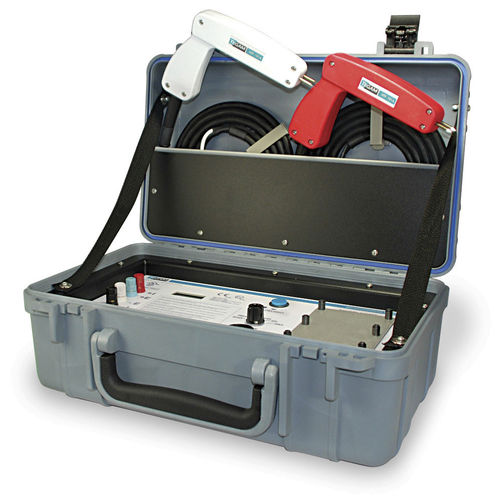
Electrical safety tester R1L-E2Aground bondfor electrical equipmentfor pipe
Add to favorites
Compare this product
Characteristics
- Test type
- electrical safety, ground bond
- Tested product
- for electrical equipment, for pipe
- Applications
- industrial, for pharmaceutical applications, for aeronautics
- Configuration
- portable
- Other characteristics
- rugged
Description
The Model R1L-E2A is the only electrical bonding meter and milli-ohmmeter certified to ATEX, UL and CSA intrinsically safe standards. It is used on the Lockheed F-35 Joint Strike Fighter and C-130 Hercules airframes as well as the Sikorsky S-70, S-92 and Seahawk helicopters to test electrical bonds on antenna installations, electrical safety grounds and lighting protection systems.
A rugged heavy-duty plastic case is provided to contain and protect the instrument. When closed, a gasket seals the lid to keep out water and dirt when the Model R1L-E2A is transported through rain or other environmentally hostile conditions. When the lid is open, a second gasket provides a seal for the front panel, and all panel openings are sealed to prevent water entry, as is the removable battery cover.
Two different styles of 4-wire Kelvin probes are available to adapt to the physical conditions. Both the large HTP-101A pistol grip Kelvin probes and the smaller SKP-8 hand probes are designed with static dissipating properties and are an integral part of the intrinsic safety system. The SKP-8 Kelvin probes have a choice of replaceable tips to further accommodate the work requirements.
The Model R1L-E2A is battery powered by three internal heavy-duty alkaline “D” cells. Front panel controls include a POWER ON-OFF switch and a rotary range selector switch. Five resistance ranges are provided from 2 mΩ to 20 Ω.
Catalogs
R1L-E2A
2 Pages
Related Searches
- Measuring machine
- Portable testing system
- Digital testing system
- Industrial testing system
- Cabling tester
- Electrical installation tester
- Resistance testing system
- Safety testing system
- Rugged testing system
- Electrical safety testing system
- Handheld tester
- Calibration measuring machine
- Electrical equipment testing system
- Tester for automotive applications
- Ground bond testing system
- Tester for pharmaceutical applications
- Standard
- Pipe testing system
- Aeronautic tester
- Calibration standard
*Prices are pre-tax. They exclude delivery charges and customs duties and do not include additional charges for installation or activation options. Prices are indicative only and may vary by country, with changes to the cost of raw materials and exchange rates.





